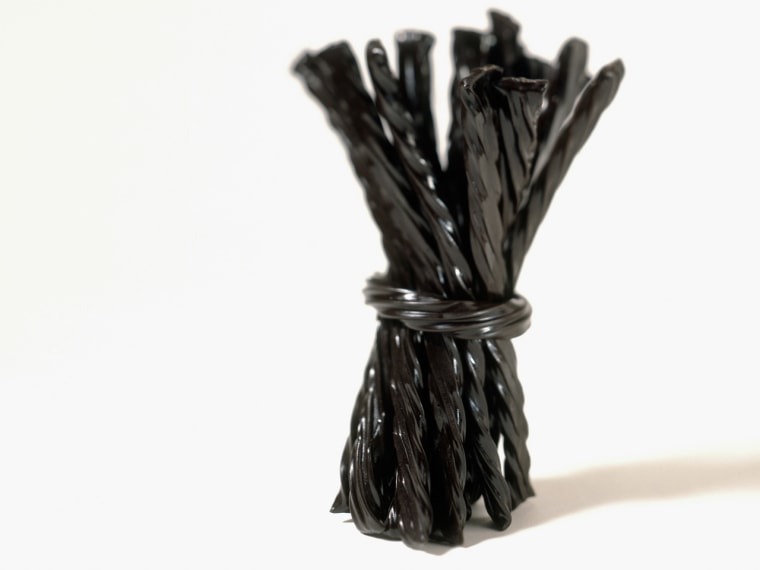When the American Licorice Company announced on Wednesday it was voluntarily recalling its black licorice Red Vines because of high levels of lead, about half the country paused and thought, “Wait, people eat black licorice?” The other half (presumably mostly curmudgeonly grandfathers and uncles) became disappointed to learn it would be harder than ever to find the sweet treat.
Licorice, which comes from the root of Glycyrrhiza glabra plant, flavors what we call black licorice (which is redundant), liqueurs such as Jagermeister, and medicines such as NyQuil, which relies on the pungent flavor to mask the medicinal taste. Even though it commonly appears in products, licorice seems polarizing.
“People either love it or hate it and, as far as I can tell, it’s not a learned like or dislike,” says Marcia Pelchat, an associate member of the Monell Chemical Senses Center in Philadelphia, a nonprofit center, which researches taste and smell.
“I don’t know a specific gene that is associated with liking and disliking licorice. [But] it does seem to be something that people are born with.”
While experts haven’t conducted much research on licorice preference, Pelchat — who dislikes the flavor but is married to a lover of licorice — shares a few theories as to why licorice divides us between the lovers and the haters.
When we eat, we use both the sense of taste and smell to detect flavor. Taste includes sweet, bitter, salty and sour. When we bite into a piece of licorice, we taste glycyrrhizin, a natural sweetener in licorice root, which can taste, to some, like saccharin, the artificial sweetener found in Sweet 'n' Low. With licorice, this sickly sweet lingers, causing some to wrinkle their noses in displeasure.
“What this suggests to me is maybe liking and disliking licorice is related to liking and disliking saccharin,” Pelchat says.
Licorice also contains anethole, which is aromatic and plays on our olfactory sense. Anethole also occurs in anise and fennel, both of which licorice haters might find more tolerable. (Anise and fennel flavor absinthe, for anyone who thought it, too, might be a licorice liqueur.)
“[Taste] seems to be built-in; it doesn’t require any learning,” she explains, adding that people can train themselves to like spicy foods, or even cilantro. “However, responses to smells seem to be learned.”
While this means people might dislike licorice because it reminds them of the smell of NyQuil, or another malodorous memory, Pelchat suspects that it’s really the taste, not the smell that turns people off.
“There are lots and lots of genes involved in the perception of [flavor] and of aroma and we probably all have relatively unique sensory worlds. So that’s just something to keep in mind in talking about individual differences in preference.”
Related:
